What is wood chopping board treated before use?
Content:
It is very important to properly process a wooden cutting board before use - this will extend its service life and will become a guarantee of the safety of an object that is constantly in contact with food. For processing, large manufacturers of kitchen utensils recommend special oils of their own production. But they are expensive and not always available. We will figure out how at home you can cover a new board and how to process it correctly.
What is the treatment for?
During operation, the cutting board is subjected to huge loads. Knives scratch it, water, the juice of processed products, blood, as well as cleaning products used to wash dirt from the board get into the pores of the tree. Therefore, the service life of untreated wood is not more than a year. At the same time, boards made of beech, birch, pine, oak are expensive.
During processing, oil fills the natural pores of wood. This solves the following problems:
- The development of undesirable microorganisms in the tree: molds, putrefactive bacteria, etc. Microorganisms that settle on the board can not only spoil food, but also get into food, causing health problems. Therefore, processing is necessary in order to make the use of the board safe.
- Excessive swelling and deformation of wood from water. This problem is especially relevant for plywood cutting equipment. Penetrating between layers of veneer, moisture causes delamination. Impregnation protects pores from water ingress, preventing deformation.
- Chips and cracks. When dry, the wood becomes brittle. Protective impregnation does not allow moisture to completely leave the pores.
That's why manufacturers of kitchen utensils almost unanimously recommend processing cutting equipment.
Initial processing must be carried out immediately after purchase. Even a single wash of the board nourishes it with water, and the protective composition “prohibits” water in the pores. Such a board will be much heavier, and it suits perfectly for the development of putrefactive bacteria.
We process the board with oil
First of all, the board must be inspected to understand how the wood fibers are located. It is necessary to impregnate along the fibers.
By structure, wooden products are divided into several categories:
- Made of wood cross cuts. Such an end plate is easily recognizable by a pattern resembling tree rings on a stump. Endboards are heavier and more durable, and their price is usually higher than other varieties.
- Boards made of longitudinal saw cuts are called lateral. They are lighter and cheaper than end ones. On them, the fibers form parallel lines running across the movements of the knife during operation.
- Typesetting, or Butcher Blocks. They are glued from small sticks made of end wood.
Having decided on the type of product, they select the appropriate impregnation. These are either mineral or vegetable oils.
Vegetable oils
Traditionally, all peoples used oils obtained from plants for processing wood:
- olive
- sunflower
- flaxseed
- sesame seeds
- grape seed, etc.
However, today vegetable oils cannot be called ideally suited for processing cutting boards. They have two significant drawbacks:
- Vegetable oil will go rancid over time. Bacteria, eating the nutrients in the oil, produce butyric acid - a substance with an unpleasant odor and a bitter taste.Therefore, over time, a product soaked in a natural composition will start to smell unpleasant.
- Long drying time. Within 2-3 days, the processed board will stain everything that it comes into contact with. Given that the impregnation is applied in 3-5 layers, the processing process will stretch for several weeks.
If you want to use vegetable oil, choose linseed. It practically does not spoil.
Another type of impregnation is drying oil. This vegetable oil is cooked with special additives that accelerate drying. But even it dries for a very long time.
Mineral oils
An alternative to vegetable oils is oil refined products. They are called mineral oils. Not all mineral impregnations are suitable for processing kitchen utensils. You should choose either special liquids for processing cutting boards (for example, such a composition is sold in IKEA), or liquid paraffin. The latter option is the most affordable - you can buy it at any pharmacy.
To give the oil an optimal consistency, it is mixed with natural beeswax. The base is heated in a water bath, and then medium-sized (with cherries) pieces of wax are added. The mixture is stirred until uniform.
The optimum ratio of oil to wax is 4: 1.
The prepared mixture was cooled to room temperature. Now everything is ready for work.
How to properly impregnate?
Before starting work, the board is thoroughly dried and cleaned from roughness. For polishing, use sandpaper with fine grain (No. 400, No. 600).
For work, you need a brush for applying impregnation, as well as a paper towel to remove excess.
The composition is poured onto the board in small portions and carefully distributed with a brush (a cotton swab is also suitable) along the fibers. All sides must be machined, including the side edges. After complete drying, the treatment is repeated (total - up to 5 times).
A processed board does not absorb odors and lasts several times longer than an unprocessed one. It is important only not to forget to repeat the treatment 2-3 times a year.
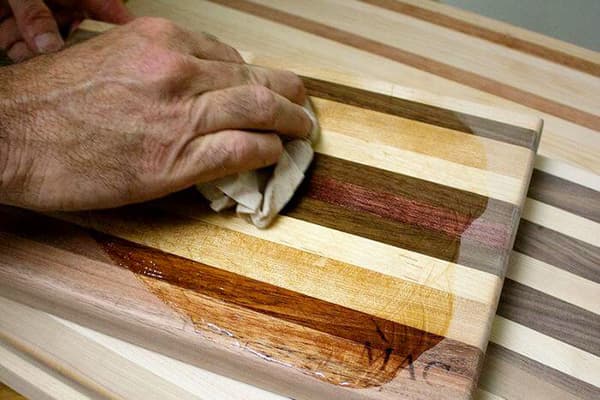
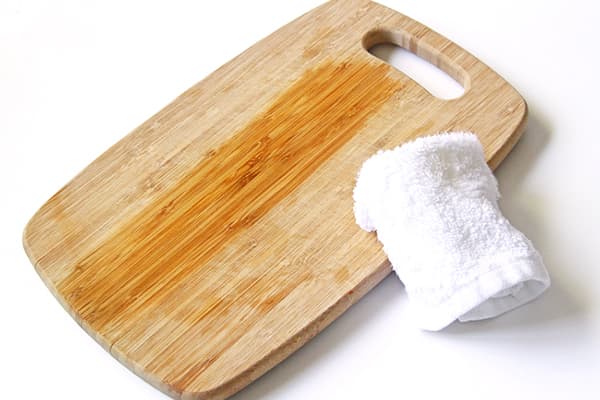
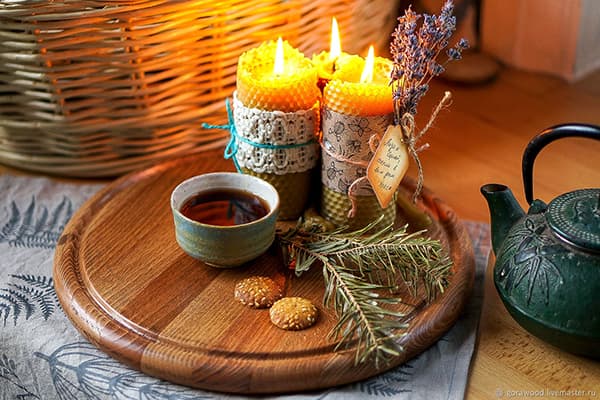
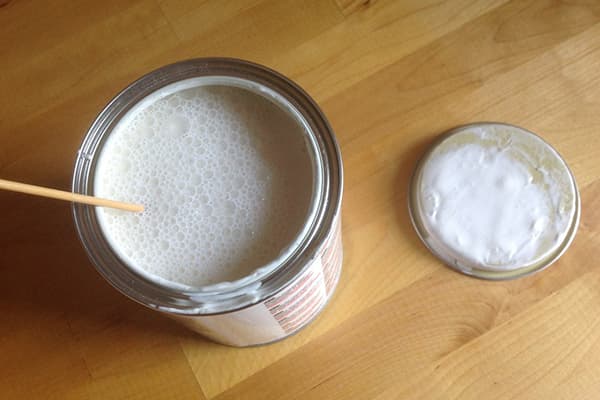
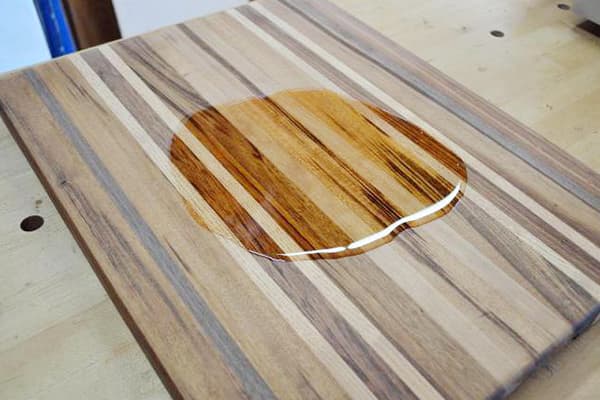
It would be nice to heat the board before impregnation. First ..